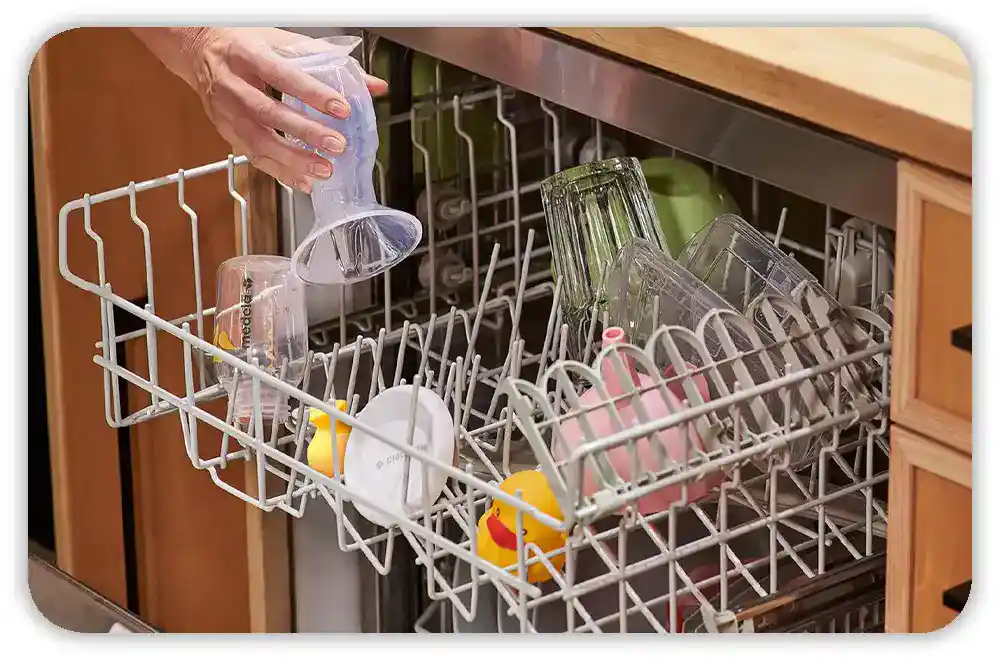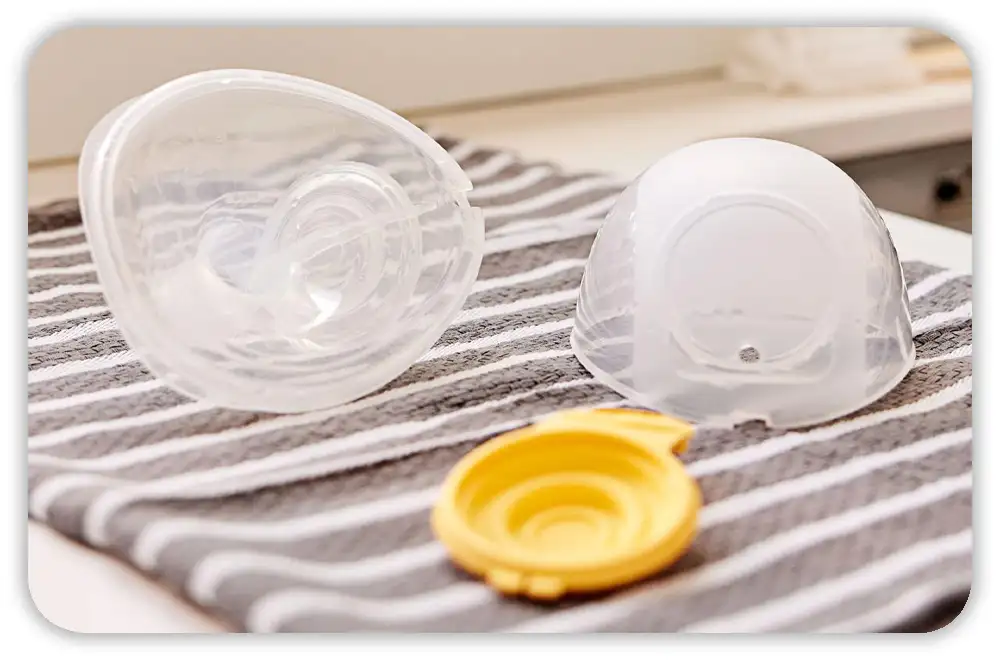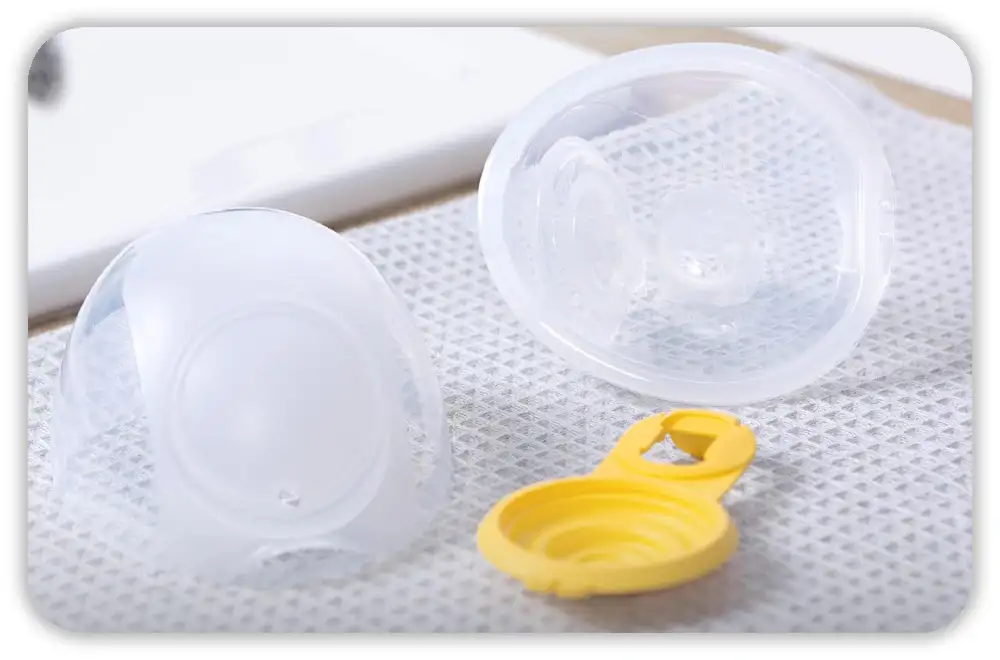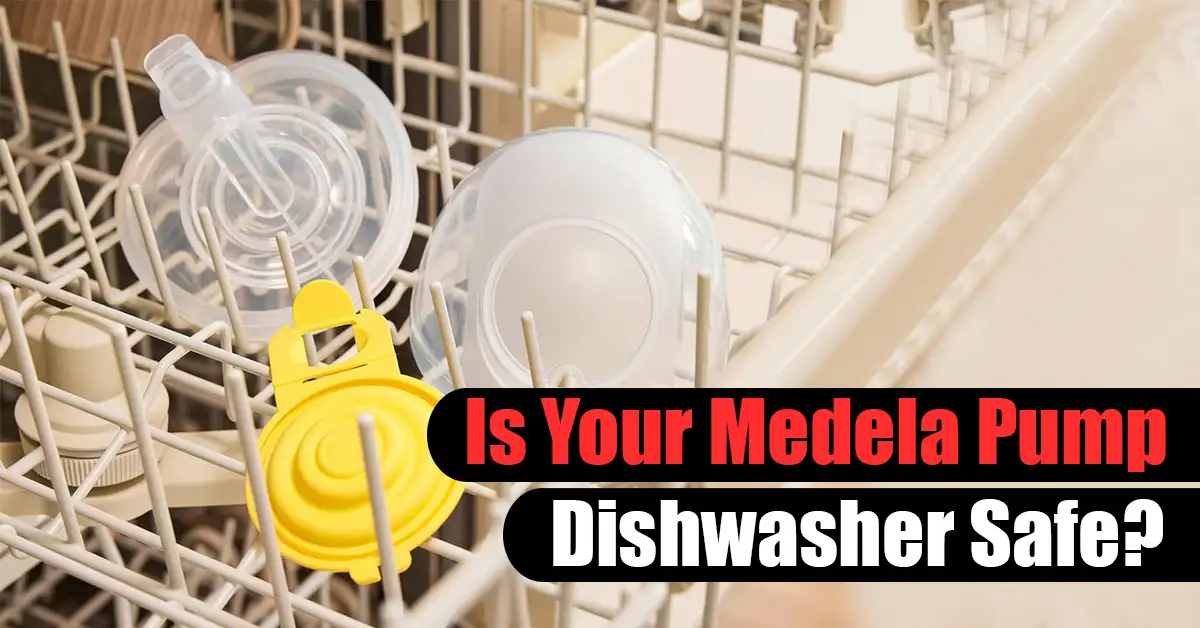Tired of washing tiny pump parts by hand at 2 a.m.? Same here. So let’s clear it up—are Medela pump parts dishwasher safe? Yes, some are. But not all. And how you wash them matters more than you think.
After three kids and four Medela pumps, I’ve learned the hard way. Some parts can take the heat. Others? They melt, warp, or ruin suction.
As a mom who pumps and reviews baby gear, I’ll show you what really works. Stick around—I’ll share the safe, fast way to clean your Medela pump without wrecking your parts.
Table of Contents
Can Medela Pump Parts Go in the Dishwasher?
Yes—most Medela pump parts are dishwasher safe, but not all. And how you load them matters just as much as what you clean.
I remember my first week of pumping. I was tired, milk was everywhere, and I had parts all over the counter. I threw everything in the dishwasher and hoped for the best. Bad move. The next day, I had no suction—my membrane had warped.
Medela says many hard plastic parts are safe for the top rack. That includes bottles, flanges, and some valves. But soft parts like O-rings or silicone membranes? Those can get damaged by heat or movement.
Here’s a quick list of what is and isn’t dishwasher safe:
Top-Rack Safe
- Breast shields (flanges)
- Bottles and caps
- Hard plastic valves
- Membranes (only in a basket or mesh bag)
Not Dishwasher Safe
- Tubing (can trap water and grow mold)
- Motor parts (never get them wet)
- Silicone O-rings (can bend or stretch)
- Charging cords or batteries
Medela Pump Parts: What’s Dishwasher Safe
When you’re juggling feedings, sleep, and life, the dishwasher feels like a gift. But not every Medela part can take the heat. I’ve had to toss a few valves after melting them in the wash. Here’s what I’ve learned—so you don’t have to.

Dishwasher Safe (Top Rack Only)
These parts are strong and hold up well—as long as you keep them on the top rack:
- Breast shields (flanges) – built to last and easy to clean
- Bottles and caps – safe and simple to sanitize
- Plastic valves – fine if they’re the hard kind, not soft or bendy
- Membranes – but only if you use a mesh bag or basket
Not Dishwasher Safe
These parts trap water, melt, or break if washed:
- Tubing – water can stay inside and grow mold
- Motor units – one splash can kill the whole thing
- Silicone parts (like O-rings) – heat can stretch or warp them
- Anything electric or battery-powered – keep dry at all times
Real talk: I once ran the tubing through the dishwasher. Thought it would dry out. It didn’t. Mold showed up by day three—and I had to buy new ones. Ouch.
Medela Pump Models: What You Can and Can’t Wash in the Dishwasher
Not all Medela pumps are the same. I’ve used a few over the years—from the simple Harmony to the smart Sonata—and each one has its own cleaning rules.
If you’re asking, “Can I toss this in the dishwasher?”—here’s a quick guide. I’ve broken it down by model, so you know what’s safe and what’s not. (Trust me, I’ve made all the mistakes for you.)
| Medela Pump Model | Dishwasher Safe | Not Dishwasher Safe |
| Harmony (Manual) | Flanges, bottles | Tubing, handle, O-ring |
| Pump In Style | Bottles, flanges | Motor, tubing |
| Freestyle Flex | Collection kit | Charging parts, tubing |
| Sonata / Symphony | Hard plastic only | Silicone parts, electronics |
How to Clean Medela Pump Parts in the Dishwasher
Yes, the dishwasher can save you time—but only if you use it right. I learned this the hard way. One rushed morning, I found warped flanges and a melted membrane. Ouch.

Here’s how I clean my Medela pump parts the safe way—without wrecking anything:
Top Rack Only
The top rack is safer. The heat and water pressure are lower. That means no flying parts and less chance of damage.
Once, I put bottles on the bottom rack. They flipped, stuck, and came out a mess. Never again.
Use a Mesh Bag or Basket
Small parts vanish fast in the wash. Membranes, valves—gone. Or worse, they fall onto the heating coil.
Now I use a mesh laundry bag or a basket made for bottle parts. It keeps everything together.
Choose a Gentle Cycle
Skip the strong settings. A light or eco wash is enough to get parts clean—without baking them.
My machine has a “baby care” mode. That’s my favorite. But even a basic gentle cycle works fine.
Fragrance-Free Detergent Only
Babies notice smells and tastes. Use clear, scent-free detergent with no dyes.
I learned this after my baby refused a bottle that smelled like lemon. I switched and never looked back.
Always Air-Dry
Skip heated drying. It can warp membranes and stretch soft parts. Lay parts out on a clean towel or bottle rack.
Bonus: air drying helps avoid that weird plastic smell dishwashers sometimes leave behind.
Quick Recap:
- Use the top rack
- Mesh bag for small parts
- Gentle cycle, no heat
- Fragrance-free detergent
- Air-dry only
Done right, the dishwasher makes cleaning easy. It keeps your pump safe, your milk clean, and your stress way down.
Is Dishwashing Enough? When to Sanitize
So, you ran your pump parts through the dishwasher—top rack, gentle cycle, mesh bag. Done, right? Well… almost.
Cleaning removes milk and gunk. Sanitizing kills germs. And yes, they’re not the same.
I didn’t know this at first. I thought the dishwasher did it all. But after reading the CDC’s advice—and getting a mild case of thrush with baby #2—I learned to be more careful.
What the CDC and Medela Recommend
Sanitize once a day if your baby is:
- Under 3 months old
- Born early (a preemie)
- Has a weak immune system
Even with a healthy baby, it’s smart to sanitize sometimes—especially during cold and flu season.
Cleaning vs. Sanitizing
- Cleaning = removes milk, dirt, and build-up
- Sanitizing = kills hidden germs and bacteria
Cleaning is fine for most days. Sanitizing adds an extra layer of safety—when you really need it.
When Hand-Washing or Boiling Is Better
No dishwasher? Or using parts that can’t go in it (like tubing or O-rings)? Do this instead:
- Wash in hot, soapy water
- Scrub with a bottle brush
- Rinse well
- Boil parts for 5 minutes (if the label says it’s safe)
I used to boil flanges once a week while the baby napped. Took 10 minutes, tops.
Other Easy Ways to Sanitize
Not into boiling? Here are faster options:
- Microwave steam bags – quick and easy
- Electric steam sterilizers – hands-free, great for daily use
- UV sterilizers – some moms love them (just check that your parts are UV-safe)
Tips for Busy Moms: My Real-Life Routine
Let’s be real—no one has time to wash pump parts five times a day. I tried that in week one. It lasted… two days. Then I found a better way.

Here’s the routine I’ve used through three babies, full-time pumping, and countless late-night feeds.
My Hybrid Routine (Fast + Safe)
- After each pump: Rinse parts with warm water. Let them air-dry.
- Once a day: Run all dishwasher-safe parts on the top rack in a mesh bag.
- Every few days: Sanitize with a steam bag—especially if baby’s sick or we’ve been out.
This keeps things clean without wasting time or scrubbing nonstop.
Spare Parts = Sanity Saver
Buy extras. Trust me.
I keep two full sets of flanges, bottles, and valves. That way, I don’t need to wash parts between every pump.
On busy days, I’ll use one set in the morning, a second later on, then run both through the dishwasher after bedtime. Easy.
My Favorite Time-Saving Tools
These simple tools make a big difference:
- Mesh dishwasher basket – keeps small parts from flying around
- Drying rack with pegs – speeds up air-drying, no puddles
- Silicone part guards – stop flanges from bending during travel or storage
- Steam sterilizer bags – fast and great for travel or nighttime cleaning
What Happens If You Wash the Wrong Parts?
So… what if you already tossed the tubing in the dishwasher? Or melted a membrane on the heated dry cycle? (Been there. It smelled weird and didn’t work after.)
Common Mistakes
(No shame. We’ve all done it.)
- Washing the tubing – Looks clean, but traps water inside. Mold shows up fast.
- Putting soft silicone on the bottom rack – Heat and spray can stretch or warp it.
- Skipping the mesh bag – Small parts fall through, hit the heating coil, and melt.
- Using scented detergent – Leaves a taste babies hate. I learned that one quick.
Signs Your Parts Are Damaged
Even if they look okay, damage can sneak up on you. Watch for:
- Membranes or valves that feel thin or stretched
- Flanges that don’t seal well
- A drop in milk output—without a clear reason
- Parts that look cloudy, bent, or cracked
When in doubt, replace it. A $5 part is better than losing a pump session.
What to Replace—and Where to Find It
- Membranes and valves – Replace every few weeks if you pump a lot
- Tubing – Replace if you see water or mold inside. Don’t try to save it
- Flanges or connectors – Swap out if they crack or stop sealing right
Conclusion: Clean Pump, Peace of Mind
Here’s the bottom line: Yes, you can wash Medela pump parts in the dishwasher—but only some, and only if you do it right.
Top rack. Mesh bag. Gentle cycle. No heat. That’s it.
I’ve learned these tips the hard way—warped flanges, lost membranes, and one time, a melted bottle cap that came out shaped like a pretzel. Now? I spend less time scrubbing and more time snuggling my baby. (Okay, let’s be real—probably sleeping.)
Keep It Simple:
- Only dishwash parts that are labeled safe—check your model first
- Use a mesh basket to protect small parts
- Air-dry everything to avoid heat damage
- Sanitize when needed—especially for newborns or preemies
And if something breaks? Don’t stress. Most parts are easy (and cheap) to replace.
Need a Backup?
Medela lists all spare parts on their official website. Stick with trusted sources. Off-brand parts can mess with suction or fit.
Let’s Help Each Other
Got a dishwasher trick that saves time? A favorite drying rack? Or a funny “whoops” story—like the time your tubing turned green?
FAQs: Medela Pump Dishwasher Safe
Can Medela pump parts go in the dishwasher?
Yes—many Medela parts are safe for the top rack. But avoid tubing, motors, and soft silicone. These can warp or hold water.
Which Medela parts are dishwasher safe?
Flanges, bottles, bottle caps, and hard plastic valves are safe. Use a mesh bag to keep small pieces—like membranes—from getting lost.
Can I wash Medela tubing in the dishwasher?
No. Tubing is not dishwasher safe. It can trap water and grow mold. Wash by hand and let it air-dry fully.
Does Medela recommend dishwashing pump parts?
Yes—for hard plastic parts only. Always check your pump’s manual for model-specific tips.
Will the dishwasher sanitize Medela pump parts?
Not always. Dishwashers clean, but may not kill all germs. For extra safety, use steam bags, boiling, or sterilizers.

